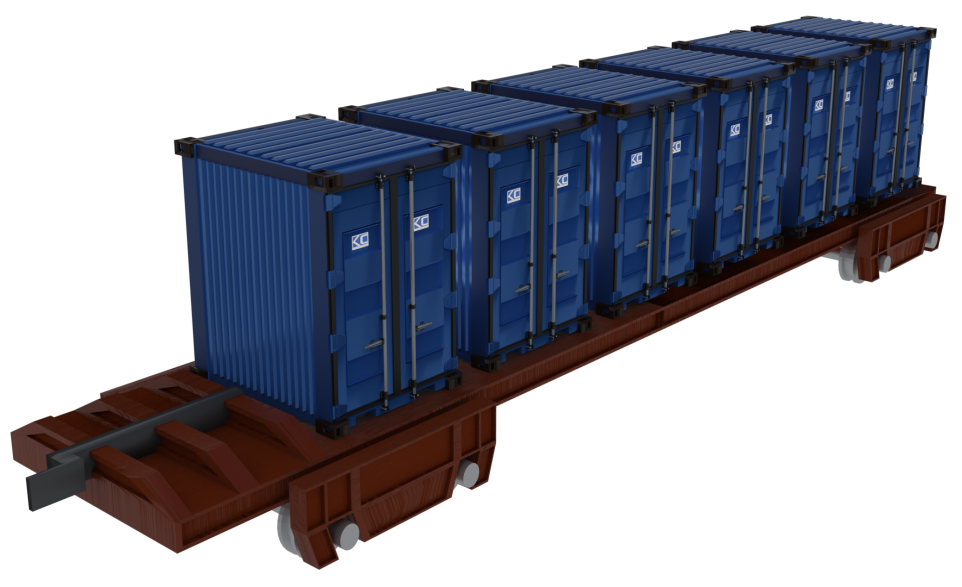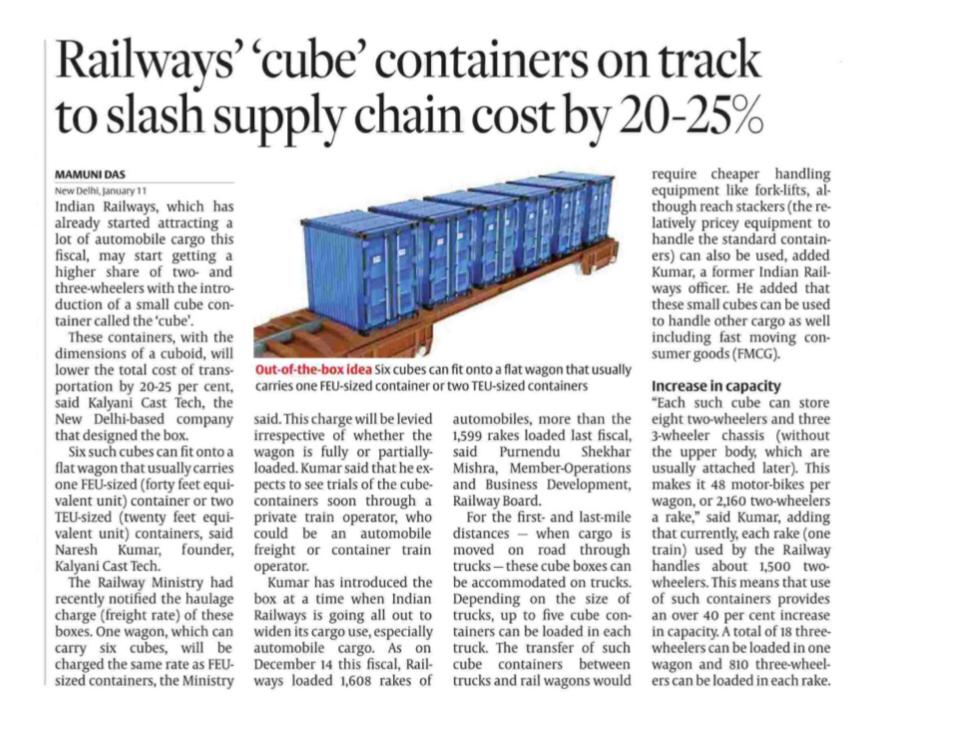Indian Railways, which has already started attracting a lot of automobile cargo this fiscal, may start getting a higher share of two- and three-wheelers with the introduction of a small, cube container called the ‘cube’.
These containers, with the dimensions of a cuboid, will lower the total cost of transportation by 20-25 per cent, said Kalyani Cast Tech, the New Delhi based company that designed the box.
Six such cubes can fit onto a flat wagon that usually carries one FEU-sized (forty feet equivalent unit) container or two TEU-sized (twenty feet equivalent unit) containers, said Naresh Kumar, founder, Kalyani Cast Tech.
The Railway Ministry had recently notified the haulage charge (freight rate) of these boxes. One wagon, which can carry six cubes, will be charged at the same rate as an FEU-sized containers, the Ministry said.
This charge will be levied irrespective of whether the wagon is fully or partially loaded. Kumar said that he expects to see trials of the cube containers soon through a private train operator, who could be an automobile freight or container train operator.
Kumar has introduced the box at a time when Indian Railways is going all out to widen its cargo use, especially automobile cargo. As on December 14 this fiscal, Railways loaded 1,608 rakes of automobiles, more than the 1,599 rakes loaded last fiscal, said Purnendu Shekhar Mishra, Member Operations and Business Development, Railway Board.
For the first- and last-mile distances — when cargo is moved on road through trucks — these cube boxes can be accommodated on trucks.
Depending on the size of trucks, up to five cube containers can be loaded in each truck.
The transfer of such cube containers between trucks and rail wagons would require cheaper handling equipment like fork-lifts, although reach stackers (the relatively pricey equipment to handle the standard containers) can also be used, added Kumar, a former Indian Railways officer. He added that these small cubes can be used to handle other cargo as well including fast moving consumer goods (FMCG).

Increase in capacity
“Each such cube can store eight two-wheelers and three 3-wheeler chassis (without the upper body, which are usually attached later). This makes it 48 motor-bikes per wagon, or 2,160 two-wheelers a rake,” said Kumar, adding that currently, each rake (one train) used by the Railway handles about 1,500 two-wheelers. This means that use of such containers provides an over 40 per cent increase in capacity.
A total of 18 three-wheelers can be loaded in one wagon and 810 threewheelers can be loaded in each rak
